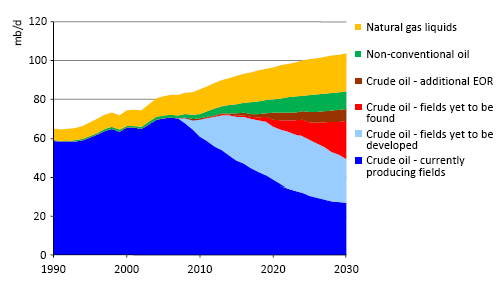 Cross-posted from the Breakthrough Institute
Cross-posted from the Breakthrough Institute
The world's energy watchdog, the International Energy Agency, released their annual World Energy Outlook report today, and it starts out with a bang. The first paragraph of the IEA report reads:
"The world's energy system is at a crossroads. Current global trends in energy supply and consumption are patently unsustainable - environmentally, economically, socially. But that can - and must - be altered; there's still time to change the road we're on. It is not an exaggeration to claim that the future of human prosperity depends on how successfully we tackle the two central energy challenges facing us today: securing the supply of reliable and affordable energy; and effecting a rapid transformation to low-carbon, efficient and environmentally benign system of energy supply. What is needed is nothing short of an energy revolution."This kind of stark warning may be nothing new if you're used to reports from folks like Greenpeace or even the IPCC. But the language in this IEA report stands in stark contrast to the tone of past agency reports, which tend to range from "bland-to-cornucopian," as Oil Drum blogger Nate Hagens aptly puts it.
But wait there's more...
The end of cheap oil: the IEA says that while oil will remain a dominant and vital world energy source, the era of cheap and easy oil is over. Despite current low prices brought about by a slumping global economy, the IEA projects an average price of $100 per barrel of oil between 2008-2015 (in 2007 dollars), rising to $120/bbl by 2030. In nominal terms, that's $200 per barrel by 2030. Not only is this the first time the IEA has ever projected a 2030 oil price higher than the current price when their reports were released, that price is equal to the projected price in all preceding reports combined (see chart below, from the Oil Drum. The blue line is actual world oil prices and the red blocks are IEA 20 year projections at the time of their release)...

Investments, not reserves, constrain oil supply. The IEA concludes that the world's oil reserves are "in principle, large enough" for output to continue to grow, but notes that the massive scale of investments required to keep pace with global oil demand and depleting mature oil fields will be the constraining factor. World oil demand is projected to grow from 84 million barrels per day (mmbd) in 2007 to 106 mmbd in 2030 in the reference case (a frozen-policy base case). To meet growing demand and replace depleting oil fields, 64 million barrels per day of new oil production must be brought online between now and 2030, an amount equal to over three-quarters of current total oil production capacity. 30 million barrels per day of new capacity is projected to be needed by 2015. Bringing on those new supplies will require a massive investment of capital. The IEA projects a cumulative need for around $8.4 trillion in investment for the oil and gas sectors between 2007-2030, or a $350 billion annual investment.
Production of conventional oil will plateau by 2030: According to the IEA, "Although global oil production in total is not expected to peak before 2030, production of conventional oil - crude oil, natural gas liquids (NGLs) and enhanced oil recovery (EOR) - is projected to level off towards the end of the projection period [2030]." See graph below from the IEA:

$26.3 trillion in energy investments needed: Cumulative investments in energy supply infrastructure amounts to $26.3 trillion between 2008 and 2030. $13.6 trillion is needed for the electricity sector, split half-and-half between electricity generation and transmission.
Global greenhouse emissions are projected to rise 45% by 2030. Senior Breakthrough Fellow, Roger Pielke Jr. thinks even these projections are dramatically underestimated.
Developing world drives energy demand, emissions growth: Driving by rapid economic growth in developing nations, non-OECD nations are responsible for 97% of projected emissions growth in the IEA's reference scenario, and all of the projected increase in oil demand. Three quarters of projected emissions growth will occur in China, India and the Middle East alone.
Currently operating power plants responsible for 75% of emissions in 2020. The IEA calls attention to the slow rate of capital turnover in the power sector, where long-lived power plants currently operating today will be responsible for three-quarters of projected emissions in 2020. Achieving climate stabilization coals will require more than simple providing clean energy to meet new energy demand and must address these already "locked-in" emissions from existing power plants.













No comments:
Post a Comment